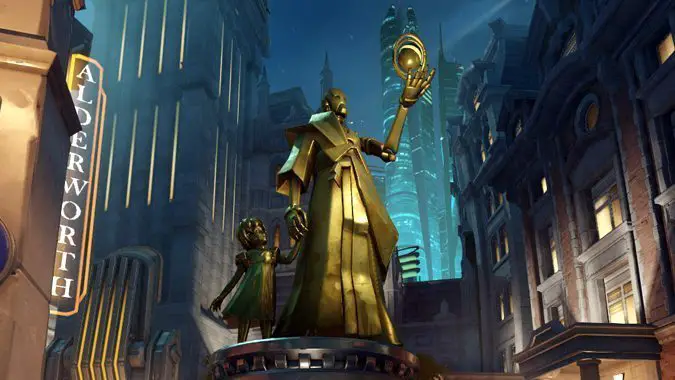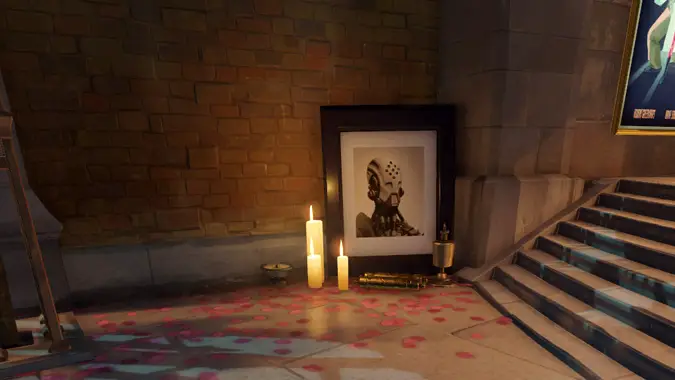Know Your Lore: Overwatch’s ongoing story

Overwatch — the game being released on May 24 — doesn’t really have an overarching story. It’s not that type of game: it’s a multiplayer first-person shooter, not an RPG. But Overwatch, the team highlighted in the title, certainly has a lot of story going for it. And that’s what makes Overwatch interesting. Sure, the game is fun, the gameplay is fast-paced and exciting, but the fact that the game exists almost parallel to its own universe — one with an engaging, captivating narrative — makes it a different kind of animal from Blizzard’s other titles. The game doesn’t limit, shape, or define the narrative in any way.
Instead, that narrative exists in outside media. Animated shorts, comics, and even the short descriptions given to heroes in the game all serve to tell the story of an Earth where at one point, something went horribly wrong. And that event — the Omnic Crisis — was the genesis for the creation of a superhero team that doesn’t actually encompass all the heroes available to play in Overwatch. In fact, you can swap freely between characters depicted both as heroes and villains in the narrative. It doesn’t matter who you play, because the story exists outside of that team-based bubble of ongoing combat.
In fact, you could almost say that the gameplay in Overwatch doesn’t really matter — it’s just the side product of a fascinating story that still seems to be very much in progress.
The story so far
We’ve spent the last several weeks covering the existing lore for Overwatch, and piecing together a story that has yet to be fully fleshed out. But the pieces that do exist tell a pretty compelling story. In the future, Earth exists as a world of technological advancements, one where robots called “omnics” were created and exist side-by-side with humanity. But the robots rebelled, causing the Omnic Crisis and sending the world into chaos. The Overwatch team was formed in response, with Gabriel Reyes appointed as leader, his friend Jack Morrison at his side. Overwatch put an end to the Omnic Crisis and found itself launched into the public spotlight, basking in world-wide acclaim.
Overwatch dove into scientific research, space exploration, medical advancements and more, as well as acting as an international peacekeeping force. More members joined — like Winston and Tracer — and hunted down terrorist groups like the Shimada Clan and Talon. And somewhere in all the acclaim, the team began to fall apart. Reyes and Morrison were constantly at odds with each other, and Overwatch itself was thrown in the public eye for the wrong reasons. Accusations of internal corruption and gross negligence eventually wore down the team, and after a disaster at the Swiss Headquarters, Overwatch crumbled and was officially disbanded.
Meanwhile, all around the world the wake of the Omnic Crisis continued to have a ripple effect — omnics struggled to live side by side with humanity and questioned the nature of their very existence. Companies like the Vishkar Corporation worked to rebuild entire cities that had been ruined during the Crisis, but their methods were brought into question. In Australia, the government tried to establish a peace accord with the remaining omnics but ended up earning the fury of the Outback’s residents in the process. And in Russia, a second Omnic Crisis seemed to be rearing its ugly head.
Recall and Alive
At a remote, former Overwatch base, Winston finally had enough. This is where the timeline gets really tight, because every Overwatch animated short to date — including the cinematic trailer — is connected very closely. In the background of Recall, you can very faintly hear the news announcer mentioning that Tekhartha Mondatta will speak in London that evening. It’s more clearly heard in the Overwatch Brazil version of the short. That places Overwatch’s second short, Alive, only a few hours after Recall.
So what happens? Several things in quick succession. First, there’s a second Omnic Crisis going on in Russia. Omnic tensions are still fairly high worldwide. Even Numbani, known for being a city of harmony in which omnics and humans peacefully co-exist, has postponed its Unity Day festival after receiving an anonymous threat. And while Winston considered whether or not to recall the Overwatch team, his sanctuary was invaded by Talon.
Talon, and an unknown, masked stranger who seemed intent on one thing — extracting the Overwatch agent database from Athena and finding the current locations of every former Overwatch member. After defeating the stranger, Winston narrowly managed to prevent Athena from being hacked and initiated the recall. He got an immediate response from Tracer, and while the two were distracted with talking, the stranger — Reaper — stealthily made his escape. Later that day, Tracer headed to King’s Row to see Mondatta’s presentation.
Tekhartha Mondatta wasn’t just any omnic. He was the leader of the Shambali, a group of omnics who had received what they called a spiritual awakening. Mondatta was devoted to healing the wounds caused by the Omnic Crisis and hopefully bringing humanity and omnics back together in harmonious existence. A global celebrity, Mondatta was the face of omnic peace — and a tempting target for Talon, who dispatched Widowmaker to take him down. Despite Tracer’s best efforts, Mondatta was assassinated and Widowmaker escaped with Talon.
Whatever peace Mondatta hoped to foster quickly evaporated.

Future events
It isn’t until after these events that we get to the Overwatch cinematic trailer, which now has much more story significance than it appeared to have upon its initial release. Widowmaker and Reaper are a team — at this point, it’s clear that both are involved with Talon. In the cinematic trailer, they’re after the Doomfist, an incredibly powerful weapon that was wielded by a villain named, appropriately enough, Doomfist. During Winston’s career with Overwatch, he helped take Doomfist down and it became apparent that there was more than one Doomfist in the world — in terms of narrative, Doomfist is a generational character like Green Lantern or the Flash. When one is defeated, another rises to take his place. Winston and Tracer were able to successfully prevent Widowmaker and Reaper from stealing the Doomfist … and that leaves us with where Overwatch is today.
In game, there are telltale signs of prior events. Watchpoint: Gibraltar holds Winston’s laboratory as shown in Recall, the site of Reaper’s first attack. A statue of Mondatta now graces King’s Row, and amidst the anti-omnic graffiti, a photo and small memorial to the Shambali leader can be found at the site of his last speech. But none of these hints answer the key questions to Overwatch’s ongoing mystery: who is Talon, and what are they really up to? Why are they looking for former Overwatch agents? Why did they assassinate Mondatta? And going even further back than that — what caused the Omnic Crisis in the first place?
That’s the big one, the one we still don’t have an answer for. While it’s been stated that Overwatch discovered and took care of “the force behind the uprising,” that force was never mentioned by name. Which makes me wonder if this was faulty programming or an act of sabotage… the kind of thing Talon doesn’t seem to be adverse to doing. Why? Because there’s something that organization is after — something that omnic and human peace won’t help them get. Control? Power? Good question. Maybe we’ll find out in the future. The point is, if it’s peace that Talon wants to prevent, if they want a second Omnic Crisis to succeed, it stands to reason they can’t let Overwatch reform under any circumstances… and they can’t let any charismatic proponents of omnic and human unity live.
Overwatch’s narrative strength
It’s a fascinating story. It’s a story that a lot of people are really interested in hearing, regardless of whether or not they actually want to play Overwatch. And that’s what makes Overwatch so clever — because the story doesn’t rely on the game. Gameplay is never going to get in the way of story with Overwatch, because the overarching narrative isn’t tied to that gameplay at all.
With games like World of Warcraft, Diablo, and even StarCraft, the additional story material has to work within the context of the game, because the game was here first. With Overwatch, it feels more like the game is basically a side product of an existing, broad, thriving media universe, one we haven’t really gotten to explore in depth just yet. Nothing about that game has to change in the event of any kind of thrilling story reveals.
Hand in hand with that, nothing in the story needs to heavily rely on what’s going on in-game. Overwatch is a self-contained, shoot ’em up superhero spectacular, a fast-paced, enthusiastically energetic title that doesn’t need a story to be fun. But the story is there — and Blizzard is taking advantage of that with its additional material. I’ll be playing Overwatch because it’s a lot of fun, but what I’m really waiting to see — and really excited for — is just what Blizzard plans to do with this compelling narrative that they’ve created, and where they take it from here.
Please consider supporting our Patreon!
Join the Discussion
Blizzard Watch is a safe space for all readers. By leaving comments on this site you agree to follow our commenting and community guidelines.
 @Shadesogrey
@Shadesogrey



